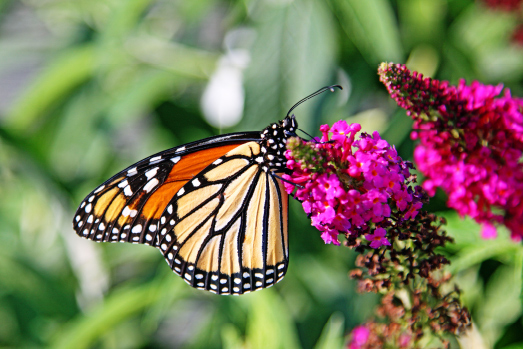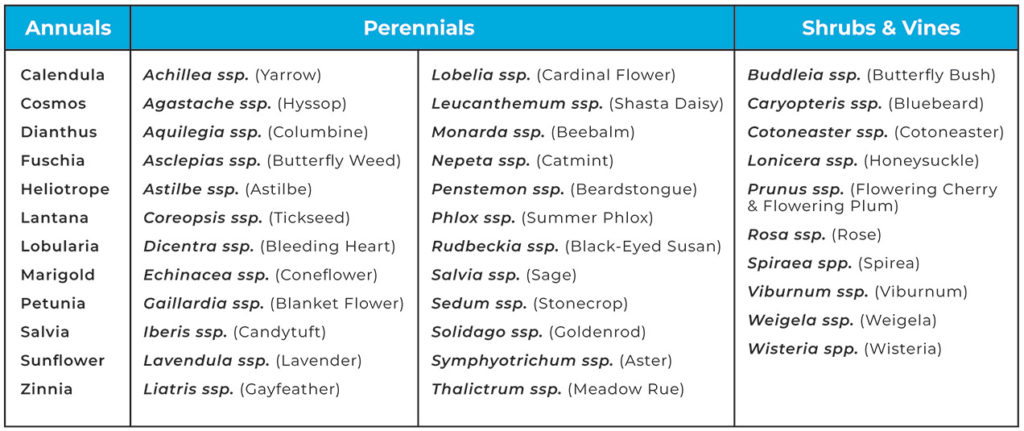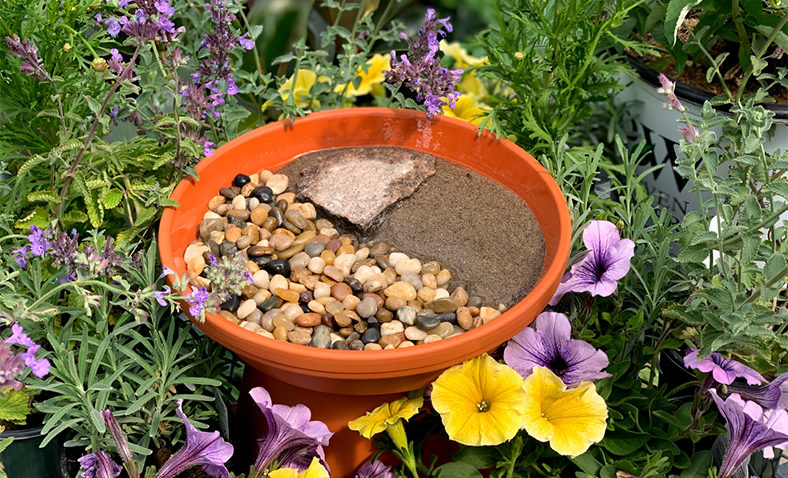LANDSCAPE DESIGN
PLANTING FOR POLLINATORS
While most people think mainly of bees when they want to attract pollinators to their gardens, there is a wide variety of wildlife that we should be encouraging to pollinate! Save the bees? Precisely. But also save the moths, butterflies, ants and beetles while you're at it!
Picking Plants
Picking pollinator-attracting plants for your garden can be overwhelming given the mass amounts of information available online. Characteristics like colour, flower shape, and odour all play a role in what plants pollinators are attracted to. Here are the basics to consider when you're starting out!

1)
Plant a diverse variety of plants. If you are selective about what goes into your garden our advice would be to pick out a few pollinating plants at different heights and repeat them throughout the garden. This is beneficial for pollinators because it increases pollination efficiency. From a design standpoint, repeating plants creates order to the eye, ensures a consistent colour palette, and helps your garden feel cohesive overall.
2)
Ensuring you have flowering plants in bloom spring through fall helps keep the pollinators coming back to your oasis week after week! Annuals are a fool proof way to ensure regular blooming as most annuals are constant bloomers all season long but, consider planting early blooming perennials and later blooming shrubs or vise versa alongside your annuals.
3)
If you tend to be less attracted to colour in your garden don't fear! Herbs are also great attractors! Mint, parsley, oregano and garlic chives are great options.
4)
When designing your garden, consider that pollinators tend to fly short distances and land frequently. Creating stations around your garden aiding in shelter, water, and food connected by landing spots or plants to pollinate will mimic natural habitats better and ensure pollinators stick around.
5)
If your space is a little on the smaller side and you can’t fit everything in that you want to, worry not! Look to your neighbours, consider what resources they are already providing for pollinators, and try your best to fill in the gaps. Better yet, get them on board and spread the pollinator love (and awareness)!

Pollinator-Friendly Plants

Maintenance Practices
Having a successful pollinator garden takes less maintenance than you think - most gardening tasks are the same or similar, with just a shift in timing. The following is a list of gardening habits to help maintain the perfect environment for your pollinators to call home!
1)
No Mow May! By pushing the date of the first mow in the spring season, you are leaving necessary weeds, such as dandelions, for an early spring food source before most of the plants in your garden are due to bloom.
2)
Perform your annual garden cleanup in the late spring, rather than the fall. Leaving leaf litter and dead plant material over winter provides nesting materials for pollinators. Remember, if you are too early in the spring, the pollinators will not have had a chance to emerge from their winter dormancy yet and cleaning up the debris may result in you removing your valuable pollinators all together!
3)
Avoid using thick layers of mulch in your garden as it is hard for pollinators to dig through to find shelter and nest.
4)
Minimize the use of pesticides wherever possible. Using beneficial insects, such as lady bugs and praying mantis, can help replace pesticides when combating garden pests.
5)
Create reliable human-made water sources if you have no naturally-occurring water source on your property. It is best if these have a shallow section or slope so pollinators can approach safely to drink or bathe.
Additional Elements
Bee Houses
Like a birdhouse, bee houses require minimal care. A refresh annually with new nesting materials is enough to keep attracting year after year! Keep in mind the size of your bee house should be comparable to the amount of flowering trees, shrubs and perennials on your property.
Hummingbird Feeders
Because hummingbird feeders can be used simply as garden décor, they aren't always used to their full potential. For example, feeder placement is key! Afternoon shade is ideal because nectar can spoil faster in full sun (6-8 hours). Morning sun is great for the feeder however because the reflections of sunlight off the nectar aides in attracting more hummingbirds! It is also true that red feeders do attract more hummingbirds!
Butterfly Baths
Offering landing sites with water for butterflies is a great way to attract them! This is an easy DIY option - any shallow bowl with a layer of sand or stone creates a great environment for male butterflies especially. Make sure the water is shallow enough so the butterflies can't drown but, that they are still able to access the water on top of the sand. Male butterflies actually soak up nutrients and salts from the sand to create energy for mating! A good old-fashioned butterfly feeder works great too.





